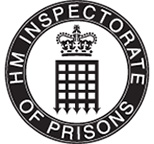Warwickshire Fire and Rescue Service: Cause of concern revisit letter
Contents
Print this document
Letter information
From:
Lee Freeman KPM
His Majesty’s Inspector of Constabulary
His Majesty’s Inspector of Fire & Rescue Services
To:
Ben Brook
Chief Fire Officer
Warwickshire Fire and Rescue Service
Sent on:
25 March 2025
Background
Between March and April 2023, we inspected Warwickshire Fire and Rescue Service. During our inspection, we identified a cause of concern in fire protection and made three recommendations.
Cause of concern
The service hasn’t done enough since the last inspection to determine its highest-risk premises to inform its risk-based inspection programme.
Recommendations
Within 28 days, the service should review its action plan, detailing how it will:
- develop a protection strategy with a resourced and prioritised risk-based inspection programme;
- review its risk-based inspection programme to make sure it identifies its highest‑risk premises; and
- put in place a clear plan with time frames for improving its management of risk information.
On 6 October 2023, you submitted an action plan setting out how you would address the area of concern and our recommendations.
Between 3–5 February 2025, we carried out a revisit to review progress against the action plan. During the revisit we interviewed staff who were responsible for developing this plan, including you as chief fire officer. We also interviewed managers and staff with responsibility for fire safety, together with colleagues from their teams. On 20 February 2025, we shared our initial findings with you. This letter provides an update on our findings.
Governance
We found appropriate and robust governance arrangements still in place to monitor progress of your action plan.
The service has improved its oversight of fire safety activity with the use of performance dashboards. Fire safety managers regularly review these dashboards against the department key operational measures. They then report these to senior leaders and the fire authority.
Action plan
The service has an action plan that covers the cause of concern. The plan identifies senior responsible officers and time frames. The plan includes updates on the progress of actions made against the cause of concern and the associated recommendations. The service is aware it still has work to do but we note the following:
- The service has increased the capacity and capability of the fire safety team.
- It has a risk-based inspection programme in place which targets the highest-risk premises.
- It has plans in place to upgrade the current risk information system and procure a new one.
- It still needs to make improvements in the recording of relevant information, as part of fire safety audits.
Progress against cause of concern
Develop a protection strategy with a resourced and prioritised risk-based inspection programme
The service has a protection strategy in place which is linked to its community risk management plan. This focuses on different services, depending on the level of risk. These include:
- fire safety audits for complex or high-risk premises;
- a targeted approach for less complex premises supported by level three fire safety officers; and
- universal fire safety advice and guidance for low-risk premises.
During our revisit we found that staff had knowledge and understanding of the strategy and knew how this linked to the fire safety work they carry out.
The service has a resourced risk-based inspection programme. We found an adequate number of competent staff in place to achieve the service’s fire safety audit target. At the time of our revisit, the service was actively recruiting to increase the team further.
In 2022/23, the service completed 265 fire safety audits compared to 557 in 2023/24. This is an increase of 292 audits.
The service has also made improvements in fire safety activity outside the cause of concern. For example, the service has increased its number of enforcements, and improved its response times to building and licensing consultations.
The service has now completed training of all operational crew and watch managers to the level three certificate in fire safety. These staff will carry out audits on lower-risk premises and make referrals to the dedicated fire safety staff if necessary. The service has plans to increase this training to all firefighters. This would improve knowledge and understanding of fire safety across the workforce.
Review its risk-based inspection programme to make sure it identifies its highest‑risk premises
The service has refreshed its risk-based inspection programme to make sure it targets the highest-risk premises.
The service uses the National Fire Chiefs Council’s guidance to provide it with a list of high-risk premises, which it then narrows down using internal datasets. The service has committed to completing 1,500 audits at high-risk premises over a 3-year period. During our revisit we found that the service was ahead of its target. The service will refresh its risk-based inspection programme every three years.
The service has also improved how easy it is for staff to identify audits from the core risk‑based inspection programme. This makes sure staff are selecting high-risk premises. It has also improved its oversight of dashboards, to better manage the performance of staff. This is because the dashboards can focus on exactly what work individuals are carrying out.
Put in place a clear plan with time frames for improving its management of risk information
The service is still working on the same risk management system, which was in place at the time we identified the cause of concern. However, it has made improvements in this area.
During our revisit we found that the service had improved in areas such as recording of risk visits carried out by crews. These recordings link into the same system used for fire safety audits. This makes sure staff have a comprehensive understanding of what type of premises they are auditing.
The service has introduced daily meetings with representatives from each department to share issues, concerns and risk information. This is then cascaded through the relevant teams to make sure there is a collective understanding of risk across the service. There are also weekly meetings within the fire safety department to share best practice and give support.
The service also plans to replace the risk management system, and, at the time of our revisit, procurement was taking place. It aims to purchase an off-the-shelf system, which it intends to have in place within 12 months. We look forward to seeing this project progress.
During the next 12 months the service plans to introduce upgrades to its current system, Farynor, to also help it work more efficiently.
Conclusion
We are pleased to see the significant steps the service has taken to address the cause of concern we issued. The result of this work is that the service now has clear direction for its protection activity and a resourced risk-based inspection programme, which targets the highest-risk premises.
While there has been work towards the replacement risk management system, upgrades and replacement systems weren’t in place at the time of our revisit. However, we are satisfied with the plan the service has in place to make sure there is a collective understanding of risk across the service. As a result, we have closed this cause of concern.
We look forward to seeing the service make further improvements to its risk management system. We will continue to monitor Warwickshire Fire and Rescue Service’s progress as part of our next scheduled inspection of the service.
Back to publication
Warwickshire Fire and Rescue Service: Cause of concern revisit letter




